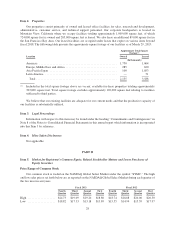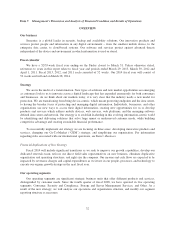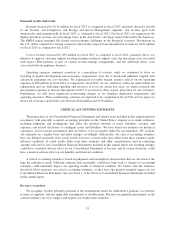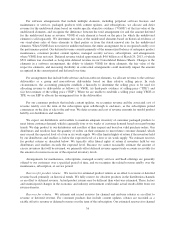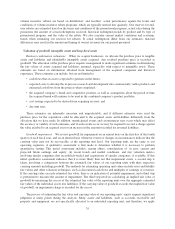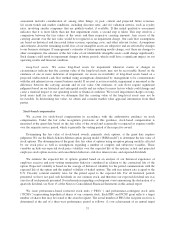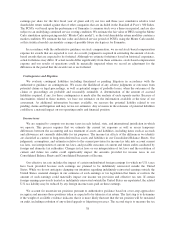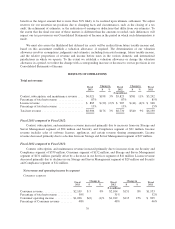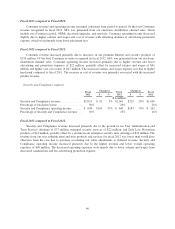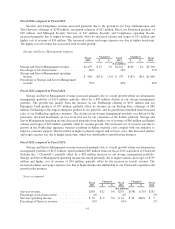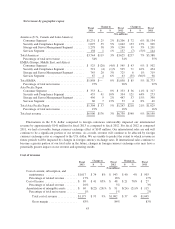Symantec 2013 Annual Report Download - page 134
Download and view the complete annual report
Please find page 134 of the 2013 Symantec annual report below. You can navigate through the pages in the report by either clicking on the pages listed below, or by using the keyword search tool below to find specific information within the annual report.judgment to allocate the assets and liabilities, and this allocation affects the carrying value of the respective
reporting units. Similarly, we use judgment to allocate goodwill to the reporting units based on relative fair
values. The use of relative fair values has been necessary for certain reporting units due to changes in our
operating structure in prior years. To determine a reporting unit’s fair value, we use the income approach under
which we calculate the fair value of each reporting unit based on the estimated discounted future cash flows of
that unit. We evaluate the reasonableness of this approach by comparing it with the market approach, which
involves a review of the carrying value of our assets relative to our market capitalization and to the valuation of
publicly traded companies operating in the same or similar lines of business.
Applying the income approach requires that we make a number of important estimates and assumptions. We
estimate the future cash flows of each reporting unit based on historical and forecasted revenue and operating
costs. This, in turn, involves further estimates, such as estimates of future revenue and expense growth rates. In
addition, we apply a discount rate to the estimated future cash flows for the purpose of the valuation. This
discount rate is based on the estimated weighted-average cost of capital for each reporting unit and may change
from year to year. Changes in these key estimates and assumptions, or in other assumptions used in this process,
could materially affect our impairment analysis for a given year.
As of March 29, 2013, our goodwill balance was $5.8 billion amongst our reporting units. Based on a
qualitative impairment analysis performed on December 29, 2012, we determined that it was more likely than not
that there was no impairment in any of our reporting units.
A number of factors, many of which we have no ability to control, could affect our financial condition,
operating results and business prospects and could cause actual results to differ from the estimates and
assumptions we employed. These factors include:
• a prolonged global economic crisis;
• a significant decrease in the demand for our products;
• the inability to develop new and enhanced products and services in a timely manner;
• a significant adverse change in legal factors or in the business climate;
• an adverse action or assessment by a regulator;
• successful efforts by our competitors to gain market share in our markets;
• a loss of key personnel;
• our determination to dispose of one or more of our reporting units;
• the testing for recoverability of a significant asset group within a reporting unit; and
• recognition of a goodwill impairment loss.
Intangible asset impairment. We assess the impairment of identifiable finite-lived intangible assets
whenever events or changes in circumstances indicate that an asset group’s carrying amount may not be
recoverable. Recoverability of certain finite-lived intangible assets, particularly customer relationships and finite-
lived trade names, would be measured by the comparison of the carrying amount of the asset group to which the
assets are assigned to the sum of the undiscounted estimated future cash flows the asset group is expected to
generate. If an asset is considered to be impaired, the amount of such impairment would be measured as the
difference between the carrying amount of the asset and its fair value. Recoverability and impairment of other
finite-lived intangible assets, particularly developed technology and patents, would be measured by the
comparison of the carrying amount of the asset to the sum of undiscounted estimated future product revenues
offset by estimated future costs to dispose of the product to which the asset relates. For indefinite-lived intangible
assets, we review impairment on an annual basis consistent with the timing of the annual evaluation for goodwill.
These assets generally include trade names and trademarks. Similar to goodwill impairment testing, a qualitative
assessment is first made to determine whether it is necessary to perform quantitative testing. This initial
36




